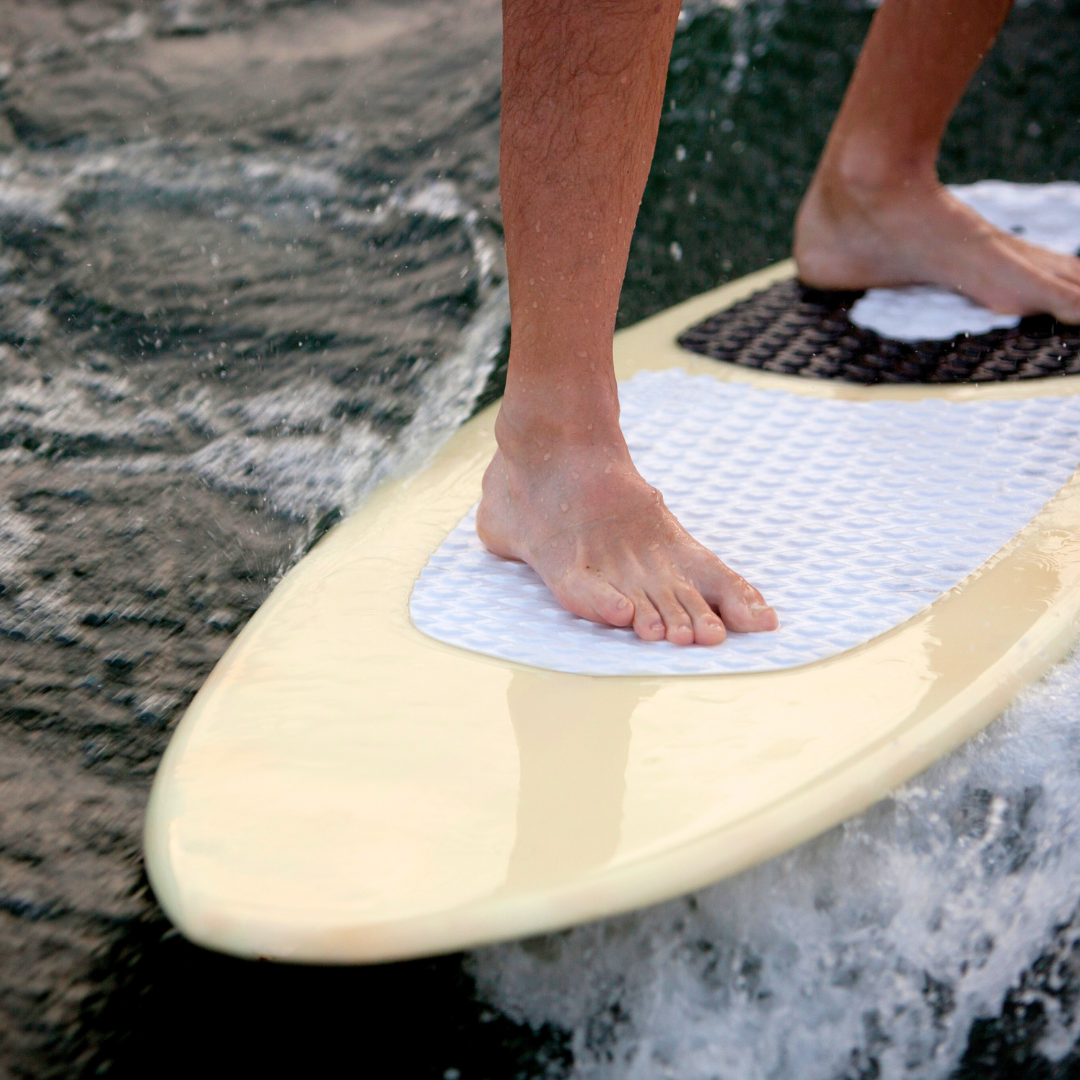
The Weight Factor: Does Your Board’s Weight Really Matter?
Share
Today, we’re diving into a question we get asked a lot: Does board weight really matter? And if so, how does it stack up against surface area—the very trait that displaces water and gives you that ride feel? Let’s break it down.
Does Board Weight Even Matter?
If you’re a wakesurfer, you know that every ounce counts. Sure, your board is just a fraction of your overall weight, but that doesn’t mean its weight isn’t a game changer. Think of it this way:
Inertia & Acceleration:
A heavier board carries more momentum. Once it’s moving, it’s like a freight train cutting through choppy water—steady and unyielding. But getting that freight train rolling takes a bit more effort. On the flip side, a lighter board jumps into action faster, responding to your every twist and turn with minimal delay.
"Lighter boards accelerate quickly, giving you that snappy feel for quick spins, while heavier boards help you carry momentum through rough water."
Agility in Motion:
It’s similar to how you spin in an office chair—arms in versus arms out makes a world of difference. With less weight at the extremes, your board turns easier, letting you hug those curves with less resistance. Less weight means less fight against you when you try to pivot, and that’s pure magic on the wake.
Even though your board is only a small part of your overall mass, every bit of weight affects how it rides. It’s a fine balancing act between rapid responsiveness and a stable, smooth cruise.
Board Weight vs. Rider Weight: A Fraction of the Equation
You might say, “My board is only a fraction of my weight, so what’s the fuss?” And while that’s true, it’s the way that fraction interacts with water that makes all the difference.
Balance and Feel:
A board’s weight affects its inertia. More weight means it’s going to “plow” through the water with extra momentum—a real bonus when conditions get choppy. Yet, that same extra weight can also slow you down when you need quick, precise moves.
"Even as a fraction of your total weight, the board's mass defines how it accelerates and holds a line through the wake."
Finding Your Sweet Spot:
It all comes down to balance. The ideal board isn’t just about being light or heavy—it’s about matching your style. Advanced riders might favor feather-light boards for that lightning-fast response, while beginners often benefit from a bit of heft to lend stability.
Is It Board Weight or Surface Area?
Now, let’s talk surface area. After all, a board with a larger surface area displaces more water, right? Here’s how that plays in:
Buoyancy and Water Displacement:
More surface area means more buoyancy. This extra lift helps the board ride higher, cutting through drag and letting you get more air when you hit that lip of the wake. Think of it as having a little extra “oomph” built into the design.
"A board with a higher surface area can sit higher in the water, reducing drag and delivering more lift, which is crucial for those high-flying tricks."
The Synergy of Weight and SA:
It isn’t an either/or scenario. The board’s weight and its surface area work hand in hand. A well-designed board strikes that perfect balance—light enough for responsive action, yet with enough surface area to provide the buoyancy and drive you need for a smooth, dynamic ride.
The secret sauce is in the integration: engineers optimize both weight and surface area to deliver a board that’s agile, fast, and stable. Too much weight without adequate SA, and you’ll feel bogged down. Too little weight with too much SA, and you might get twitchy or unstable.
In a Nutshell
Board weight matters—a lot. It dictates how quickly you accelerate, how easily you maneuver, and even how much air you can grab off the wake. But don’t forget the role of surface area. More SA means more buoyancy, which in turn helps you ride higher and smoother.
It’s all about finding the right mix for your riding style:
For the fast, trick-pulling pros: A lightweight board paired with a smart distribution of surface area means rapid, precise responses and the ability to launch high into the air.
For beginners and cruisers: A board that’s a bit heavier and designed with ample surface area offers the stability and ease you need while you’re dialing in your style.
Your ideal board is a carefully balanced dance between weight and surface area—a marriage that lets you carve those perfect lines and catch the best waves possible.
